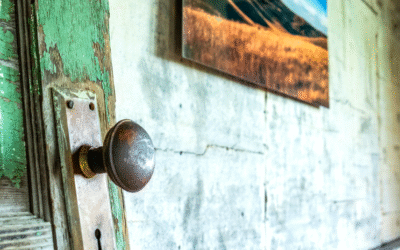Channel 37, Where Are You?
Before the advent of digital television, one channel was conspicuously absent from analog TV lineups. For decades, channel 37 didn’t exist. The reason involves a government conspiracy and the search for extraterrestrial life. Think of it as a real-life episode of The X Files.
In 1952, the Federal Communications Commission (FCC) opened up the airwaves to UHF (ultra-high frequency) signals, vastly expanding the number of available TV stations in the U.S. Broadcasters were eager to fill this newly acquired airspace but ran into a stumbling block in the Midwest when they tried to acquire channel 37.
E.T., Phone Home … Without Interference
 Danville, Illinois was home to a 400-foot radio telescope used by University of Illinois researchers to study astronomy. Built in the late 1950s, the telescope was used to sort through static that was interfering with radio waves. This static originated in the center of the Milky Way galaxy and astronomers theorized it might have been an attempt by extraterrestrials to contact earth. The telescope operated on the 610-MHz frequency band, because that provided radio astronomers with a large, unobstructed radio view of outer space.
Danville, Illinois was home to a 400-foot radio telescope used by University of Illinois researchers to study astronomy. Built in the late 1950s, the telescope was used to sort through static that was interfering with radio waves. This static originated in the center of the Milky Way galaxy and astronomers theorized it might have been an attempt by extraterrestrials to contact earth. The telescope operated on the 610-MHz frequency band, because that provided radio astronomers with a large, unobstructed radio view of outer space.
The bandwidth for channel 37 occupied frequencies between 608 and 614 MHz, in direct conflict with the telescope. Broadcast transmissions anywhere within a 600-mile radius of Danville would interfere with the telescope’s ability to detect these deep space signals. That radius included major metropolitan areas throughout the Midwest, into Canada, and parts of the American South — cities such as Chicago, Detroit, Minneapolis, Indianapolis, Pittsburgh, Atlanta, and Washington, DC.
FCC Bans Some Antenna Frequencies
 As the number of homes with access to UHF by antenna grew and pressure mounted to gobble up channel 37, scientists petitioned the FCC to intervene. At a meeting of the International Telecommunication Union in 1959, a number of frequencies considered important for scientific and technical uses were deemed off-limits to broadcasters, including those used by channel 37.
As the number of homes with access to UHF by antenna grew and pressure mounted to gobble up channel 37, scientists petitioned the FCC to intervene. At a meeting of the International Telecommunication Union in 1959, a number of frequencies considered important for scientific and technical uses were deemed off-limits to broadcasters, including those used by channel 37.
The following year the University of Illinois asked that channel 37 be reserved exclusively for radio telescope use. The FCC initially resisted, but in 1963 caved in to mounting pressure from the media and public, who were keen on keeping an ear out for aliens. They established a 10-year moratorium that forbade the use of channel 37 anywhere in the U.S. In 1974, that ban became permanent.
Television Transitions from Analog to Digital
The Danville telescope was decommissioned in 1984, but channel 37 remained dark throughout the analog era in most of North America. As a result, it has never been used for any over-the-air broadcast in the U.S. or Canada.
Prior to 1996, all television transmissions relied on analog signals. These were broadcast over the air in the same manner as radio signals and were subject to problems including static, snow, and fluctuations in sound and picture quality.
Digital TV signals transmit compressed data made up of “bits” similar to the way computers store data files. These require less bandwidth and result in higher quality images and sound, with no signal loss. Cable companies were the first to embrace digital signals; in 2009, a nationwide conversion from analog to digital occurred.
Channel 37 Comes to Life Virtually
Digital televisions allow networks to be assigned “virtual” channels that have nothing to do with their actual position on the frequency spectrum. WNWT-LD in New York was the first station in America to be assigned virtual channel 37. Because its physical broadcasts occur on VHF channel 3, there is no physical interference for radio astronomers. Today, more cable subscribers — including those in the Golden West service territory — will find channel 37 on their lineups.
Rest assured that the search for extraterrestrial life continues to this day. If E.T. really is out there and trying to phone home, we should be able to hear him … without worrying about interference from yet another “Friends” rerun!
Sources: Some information for this article was provided by online articles from Vice, AV Club, and Motherboard.




